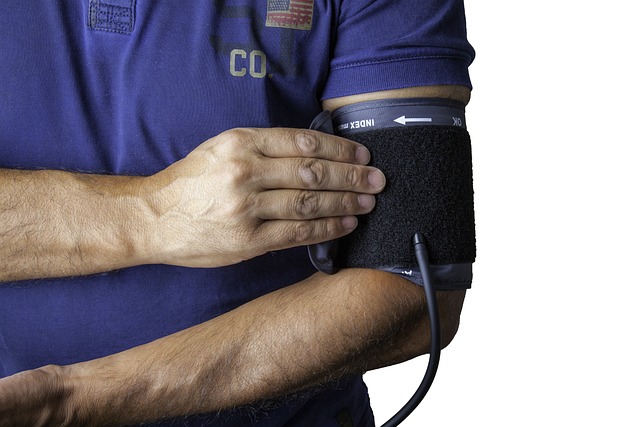Non-Surgical Belly Fat Reduction in the U.S.
Non-surgical belly fat removal options are becoming increasingly popular in the United States for individuals seeking to eliminate unwanted fat without the need for invasive procedures. These methods utilize advanced technologies designed to target and reduce fat deposits effectively. As interest in maintaining a healthy appearance continues to grow, non-invasive solutions provide a viable alternative to traditional liposuction techniques, ensuring comfort and convenience for patients.

Understanding Non-Surgical Options for Belly Fat Reduction
Non-surgical belly fat reduction encompasses several FDA-approved technologies designed to eliminate fat cells without incisions or anesthesia. Cryolipolysis, commonly known by the brand name CoolSculpting, freezes fat cells to trigger their natural elimination from the body. Radiofrequency treatments like truSculpt use controlled heat to destroy fat cells, while ultrasound-based procedures such as UltraShape utilize focused ultrasound energy to break down fat cell membranes. Laser lipolysis treatments, including SculpSure, employ targeted laser energy to heat and eliminate fat cells. Each method works by damaging fat cells in specific ways, allowing the body’s lymphatic system to naturally process and remove the destroyed cells over several weeks to months.
Benefits of Non-Invasive Belly Fat Removal Techniques
Non-invasive belly fat removal techniques offer numerous advantages over surgical alternatives. These procedures typically require no downtime, allowing patients to return to normal activities immediately after treatment. The absence of incisions eliminates scarring risks and significantly reduces the possibility of infection or other surgical complications. Most treatments take between 25 to 60 minutes per session, making them convenient for busy schedules. Results appear gradually over two to four months as the body naturally eliminates treated fat cells, creating a more natural-looking transformation. Additionally, these procedures can be performed in medical spas or dermatology offices rather than surgical facilities, often making them more accessible and less intimidating for patients seeking body contouring solutions.
Exploring Alternatives to Surgical Liposuction Procedures
When considering alternatives to surgical liposuction, several factors distinguish non-surgical options. Unlike liposuction, which immediately removes fat through suction, non-surgical methods rely on the body’s natural processes to eliminate damaged fat cells. This gradual approach typically produces more subtle results, with fat reduction ranging from 20 to 25 percent in treated areas per session. Multiple sessions may be necessary to achieve desired outcomes, whereas liposuction typically provides results in a single procedure. Non-surgical options work best for individuals with small to moderate amounts of excess fat who maintain stable weights, while liposuction can address larger volumes of fat removal. Recovery time differs significantly, with non-surgical procedures requiring virtually no downtime compared to liposuction’s several weeks of recovery.
Effectiveness and Realistic Expectations
Clinical studies demonstrate that non-surgical belly fat reduction methods can produce measurable results when properly applied to appropriate candidates. Most patients see noticeable improvements within two to three months following treatment, with optimal results visible at four months post-procedure. The effectiveness varies among individuals based on factors including age, metabolism, skin elasticity, and the amount of fat in the treatment area. Realistic expectations are crucial, as these procedures typically achieve more modest results compared to surgical options. Patients should understand that non-surgical methods work best as part of a comprehensive approach that includes maintaining a healthy diet and regular exercise routine to preserve and enhance results.
Provider Selection and Treatment Considerations
Choosing qualified providers for non-surgical belly fat reduction treatments requires careful consideration of credentials, experience, and facility standards. The following comparison shows typical cost ranges for popular non-surgical options available in the U.S.:
| Treatment Type | Average Cost Range | Sessions Typically Needed | Treatment Time |
|---|---|---|---|
| CoolSculpting | $600-$1,200 per session | 1-3 sessions | 35-60 minutes |
| truSculpt | $750-$1,500 per session | 1-2 sessions | 15-60 minutes |
| SculpSure | $1,400-$2,400 per session | 1-3 sessions | 25 minutes |
| UltraShape | $800-$1,200 per session | 3 sessions | 45-60 minutes |
Prices, rates, or cost estimates mentioned in this article are based on the latest available information but may change over time. Independent research is advised before making financial decisions.
Board-certified dermatologists, plastic surgeons, and trained medical professionals typically offer these services. Patients should research provider credentials, read reviews, and schedule consultations to discuss individual goals and treatment suitability. Geographic location significantly impacts pricing, with urban areas and coastal regions typically commanding higher fees than rural locations.
Long-term Results and Maintenance
The longevity of non-surgical belly fat reduction results depends largely on maintaining stable body weight and healthy lifestyle habits. Destroyed fat cells do not regenerate, making results potentially permanent in treated areas. However, remaining fat cells can still expand with weight gain, potentially diminishing treatment outcomes. Most patients maintain their results for several years when combined with proper diet and exercise. Some individuals may benefit from periodic touch-up treatments to address new fat accumulation or aging-related changes. Regular follow-up appointments with treatment providers can help monitor results and determine if additional sessions would be beneficial.
Non-surgical belly fat reduction represents a viable option for many Americans seeking body contouring without surgical intervention. While results are typically more modest than surgical alternatives, these procedures offer convenience, safety, and gradual improvement that appeals to many patients. Success depends on realistic expectations, proper candidate selection, qualified providers, and commitment to maintaining healthy lifestyle habits that support long-term results.
This article is for informational purposes only and should not be considered medical advice. Please consult a qualified healthcare professional for personalized guidance and treatment.




